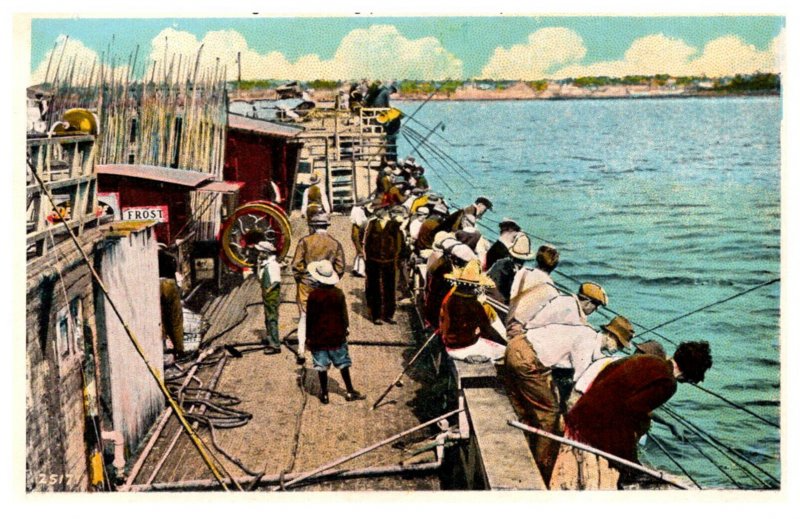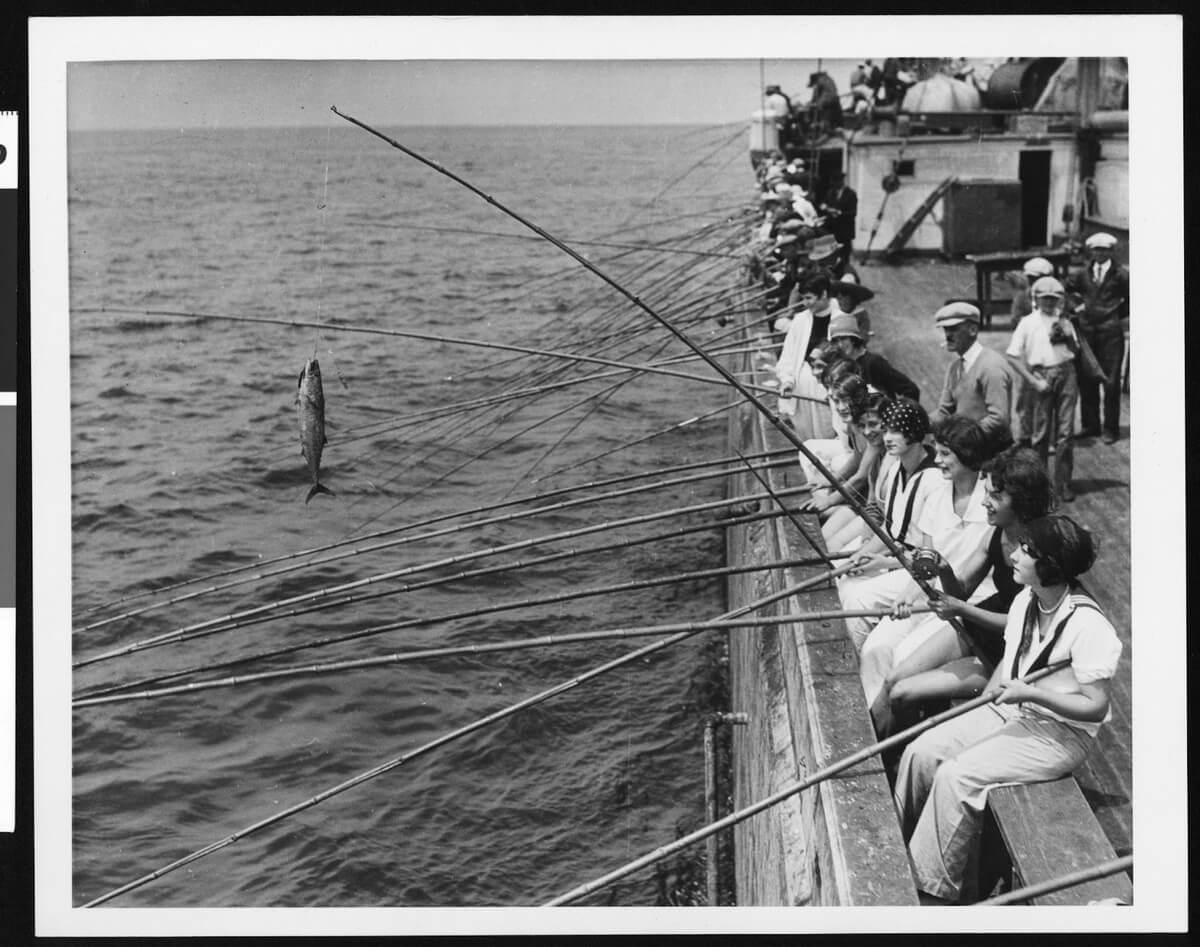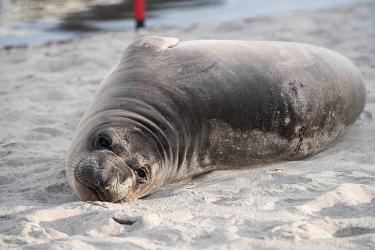Imagine a cross between a fishing pier and a cruise ship, and you might envision something like a fishing barge. A motley fleet of these enterprising vessels helped popularize recreational ocean fishing along the West Coast starting about the early 1920s. It’s an often-forgotten chapter in California’s rich fishing history.
Fishing barges such as the Georgia, Ike Walton, and Point Loma gave many California anglers their first chance to catch marine fish in prime waters. These fish were otherwise accessible only to commercial fishing boats. Though collectively called barges, they included former ferries, freighters, and fishing vessels.
Barge fishing lasted until about the 1970s. Bill Jacobson recalls his parents dropping him and his teenage friends off to fish from a barge in Seal Beach for the day. The barge “was one step above pier or jetty fishing,” he recalled. The former NOAA Fisheries staffer recalled coming home with catches of bonito, barracuda, and other species.
He remembered another regular angler known as Rosie, who had a favorite spot on the barge that remained clear for her. She always announced her arrival: “Wake up fish! Rosie’s here!”
All the Live Bait You Wanted
The most elaborate early fishing barges had coffee shops, dining rooms, staterooms, and a “bachelor’s hall” for even more fun at sea. You could buy a full day of fishing in some of the most productive waters off Southern California for $2 a day (children half price), plus $1 to rent a rod and reel. Anglers aboard got all the live bait they wanted.
They also learned from each other and enjoyed the camaraderie that comes from a day of fishing together.
“The barges made ocean fishing much more accessible to the public,” said Daniel Studt, Recreational Fishing Coordinator for NOAA Fisheries’ West Coast Region. “Ocean fishing was easy and affordable. You got on board and fished in some of the most productive waters on the West Coast.”
The legacy of the fishing barges lives on in today’s commercial passenger fishing vessels, also known as party or charter boats.
One of the most colorful barges was the former Glendale, a three-masted schooner that had originally carried lumber and fished for halibut in the Bering Sea. Captain Oakley Hall of the Star & Crescent Boat Company in San Diego found it working as a barge in Santa Monica and bought it. Hall had realized the potential of fishing barges in 1928, when he parked an old kelp-harvesting vessel called the Point Loma amid kelp beds that provided virtually guaranteed catches for everyone aboard.
“World’s Finest Fishing Barge”
Hall brought the old schooner to San Diego and turned it into “the world’s finest fishing barge,” featuring “every modern development in live bait fishing barges.” It included a 1,000-square-foot fishing platform only a few feet above the water and floodlights that allowed for night fishing. The bait wells held 100,000 sardines in 40 tons of recirculating water.
He renamed it New Point Loma, and in 1932 anchored it back in the same kelp beds. The kelp produced bumper catches of yellowtail, barracuda, sea bass, and even a marlin that fought the line for 50 minutes.
In the late 1930s, Hall sold the New Point Loma to new owners that moved the vessel to Long Beach and shuttled anglers back and forth 10 times a day for $1.25 each. The bonus was that the barge was anchored 3 miles offshore, outside of what was considered state waters at the time. This meant they did not need to pay for a California fishing license.
Underwater ecosystems developed beneath the barges as barnacles and invertebrates likely attracted fish that turned into catches, said Mike Thompson. He owns sportfishing vessels in Newport Beach and recalls fishing on a barge as a teenager. He caught his first yellowtail on a barge when he was 12.
“It was an inexpensive way to have a lot of fun fishing,” he said.
Tragedy struck the barges one foggy morning in 1940, when a Japanese freighter collided with the Olympic II about 2 miles off San Pedro. The crash killed seven anglers and dumped the rest into the water where they were later rescued. The barge sank in 2 minutes, and today sits on the ocean floor. It’s now home to the kinds of fish once targeted by its anglers and an attraction for local divers.
The busiest of the barges gave many thousands of anglers their first taste of ocean fishing. Some remained into the 1970s, but dwindled as vessel safety regulations made them more difficult to operate. They have since been largely supplanted by commercial passenger fishing vessels that offer similar amenities while visiting prime fishing areas in pursuit of the next bite.
“The fishing barges gave recreational ocean fishing its start in California as their popularity spread and people realized that catching your own seafood can be a lot of fun,” Studt said. “As anglers got to know more marine species such as yellowtail and rockfish, they also increasingly understood the benefit of healthy marine ecosystems.
“That created an important constituency for conservation,” he said. “Anglers remain some of our best advocates for conservation today.








